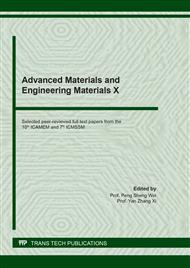p.76
p.82
p.88
p.97
p.103
p.111
p.117
p.124
p.131
Hydrogen Diffusion Influence on the Stabilizing Phases Behavior in the Ti-6Al-4V Alloy
Abstract:
For obtaining a unique microstructure in Ti-6Al-4V, hydrogen is utilized as a temporary alloying element; therefore, the mechanism of hydrogen diffusion in α and β phases should be understood. In this study, the electrochemical hydrogenation was applied to the half-length of thin titanium rods, and the diffusion annealing heat treatment was implemented at different temperatures. The hydrogen diffusion coefficient of α phase (Dα) and the hydrogen diffusion coefficient of β phase (Dβ) was determined by employing Abaqus software and C# program for three different homogeneous microstructures. The obtained results showed that Dβ increases, and Dα decreases when the hydrogen concentration in β phase increases. Furthermore, it was observed that each microstructure has a specific temperature in which the maximum hydrogen amount is absorbed. The hydrogen uptake depends more on the volume fraction of β phase than the volume fraction of α phase, which is considered an obstacle to hydrogen diffusion in this alloy.
Info:
Periodical:
Pages:
103-110
Citation:
Online since:
November 2021
Authors:
Price:
Сopyright:
© 2021 Trans Tech Publications Ltd. All Rights Reserved
Share:
Citation:


